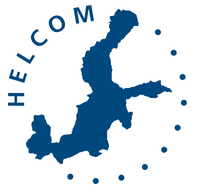Photo: Helena RosenlewAdvancing nutrient management to the routine practices of agricultural production, including in manure fertilization, is a leading topic in the meeting of the HELCOM on Sustainable Agricultural Practices, continuing today in Braunschweig, Germany. The overarching theme of nutrient recycling the Group is dealing with integrates the upgrading of national standards for nutrient content in manure and the promotion of nutrient accounting at farm level. Nitrogen and phosphorus are essential chemical elements required for agricultural crop production. However, oversupply of nutrients to the soil leads to losses to the aquatic environment and contributes to the eutrophication of the Baltic Sea, with all its negative effects on the marine biodiversity, economic prosperity and human well-being. On the other hand, nutrients are valuable resource in agriculture and improved farm nutrient management can lead to economic efficiency for farmers. In the 2-day Meeting, the coastal countries will present their national systems of standards for nutrient content in manure and will consider jointly how those standards could be best modernized, particularly so that they are based on more accurate data. Currently, the values of nutrient content for different types of manure are often set based on old data or insufficient studies. However, some good practices exist in few Baltic Sea countries which could give a start to common methodologies to be recommended for setting norms for manure in the Baltic Sea region. Thorough analysis of nutrients content in manure is a substantial part of nutrient accounting or, in other words, nutrient bookkeeping system. As a concept, nutrient bookkeeping consists of annual fertilization plans and calculation of nutrient balances. It is a tool for documenting the nutrient flows at the farms, in order to minimize the excessive use of nutrients and avoid financial losses for farmers while protecting the environment. As concluded in the HELCOM nutrient bookkeeping in April, one of the most significant obstacles in applying nutrient accounting has been the absence of common system and insufficient skills. Therefore, introducing the nutrient bookkeeping to farmers is a relevant issue and a specific session on this topic will be conducted during the Meeting. The Meeting is held on 28-29 May 2015 and is hosted by the Federal Ministry for the Environment, Nature Conservation, Building and Nuclear Safety of Germany. Mr. Dietrich Schulz from the German Federal Environment Agency will chair the meeting. All documents will be public after the Meeting. * * *Note for editors:The HELCOM Group on Sustainable Agricultural Practices () deals with agriculture in relation to the implementation of the ecosystem-based approach and involves representatives from agriculture and environment authorities of the Baltic Sea countries, as well as EU and HELCOM Observers. The group provides a platform for agri-environmental policy measures and instruments and joint discussion on the Baltic agriculture in the context of the protection of the marine environment, in order to address nutrient inputs and emissions from agriculture. The Baltic Marine Environment Protection Commission, usually referred to as , is an intergovernmental organization of the nine Baltic Sea coastal countries and the European Union working to protect the marine environment of the Baltic Sea from all sources of pollution and to ensure safety of navigation in the region. Since 1974, HELCOM has been the governing body of the ‘Convention on the Protection of the Marine Environment of the Baltic Sea Area’, more commonly known as the Helsinki Convention. * * *For more information, please contact:Dmitry Frank-Kamenetsky Professional Secretary HELCOM Tel: +358 40 630 9933 Skype: helcom68 E-mail: dmitry.frank-kamenetsky(at)helcom.fi Johanna Laurila Information Secretary HELCOM Tel: +358 40 523 8988 Skype: helcom70 E-mail: johanna.laurila(at)helcom.fi
Advancing nutrient management to the routine practices of agricultural production, including in manure fertilization, is a leading topic in the meeting of the HELCOM Group on Sustainable Agricultural Practices.
